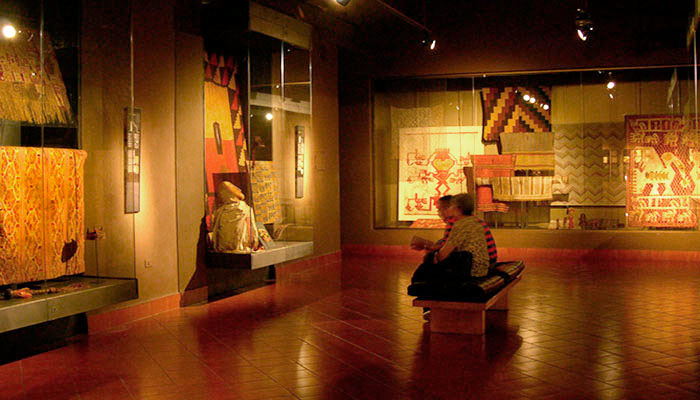Chimu, Labyrinths of a sacred costume
Enviroments for exhibiting textiles
In general the temperature in the exhibition space should be maintained between 18ºC and 24ºC, avoiding any brusque changes that may destabilize the materials with which the piece has been made.
A acceptable range of relative humidity is between 40 to 60% hr, taking into account, however, that the objects tend to adapt themselves, finding an equilibrium in the environmental conditions to which they are exposed.
Contamination by particles occurs when dust enters a building through its natural ventilation, as well as through its heating and air-conditioning systems. These particles, the dust in the air in our surroundings, are a complex mixture of dirt, carbon deposits, micro-organisms and protein-based materials. This combination can be abrasive, attract humidity, and promote the proliferation of insects, funguses and mold.
The accumulation of dust can darken or stain the surface of an object in an irreparable way, while deposits of grease are impossible to remove from porous or fragile surfaces.
Biological agents of deterioration can attract any object that contains materials of animal or vegetable origin. Biological infestation includes damage caused by microorganisms, such as mold and funguses, and wood-boring insects and moths, as well as rodents, which are considered to be one of the worst plagues.




































